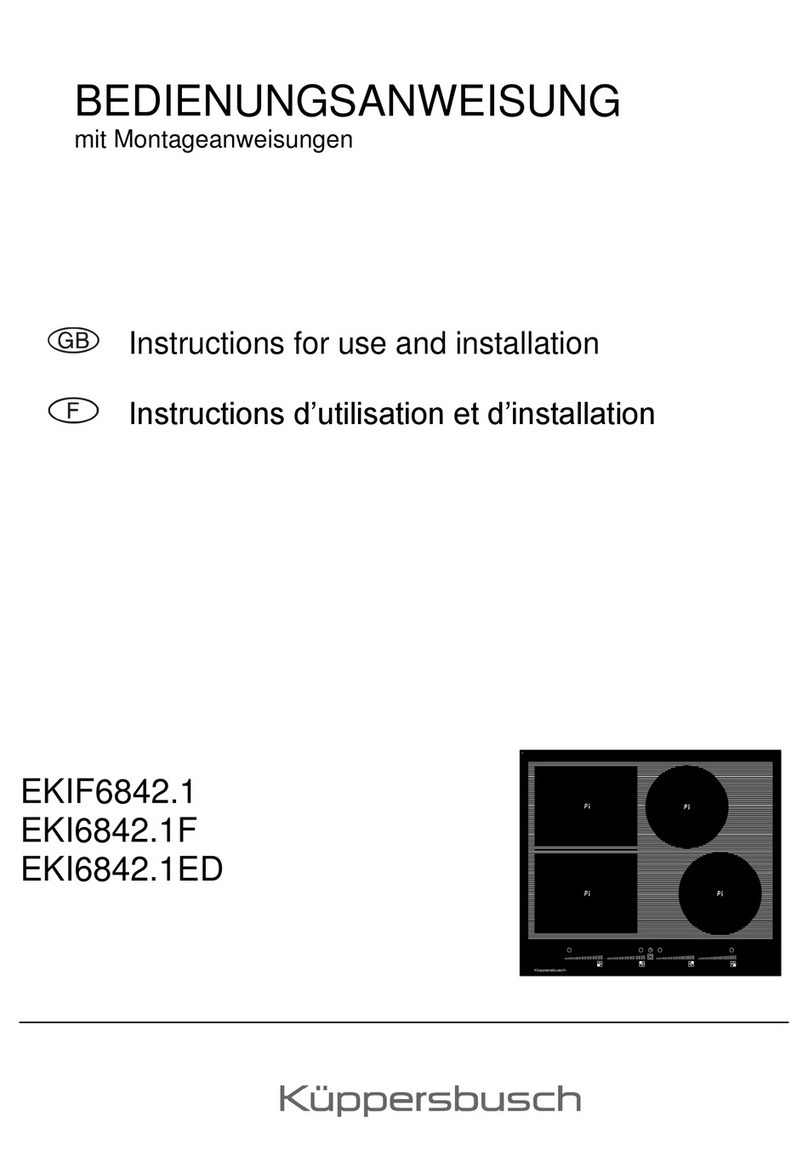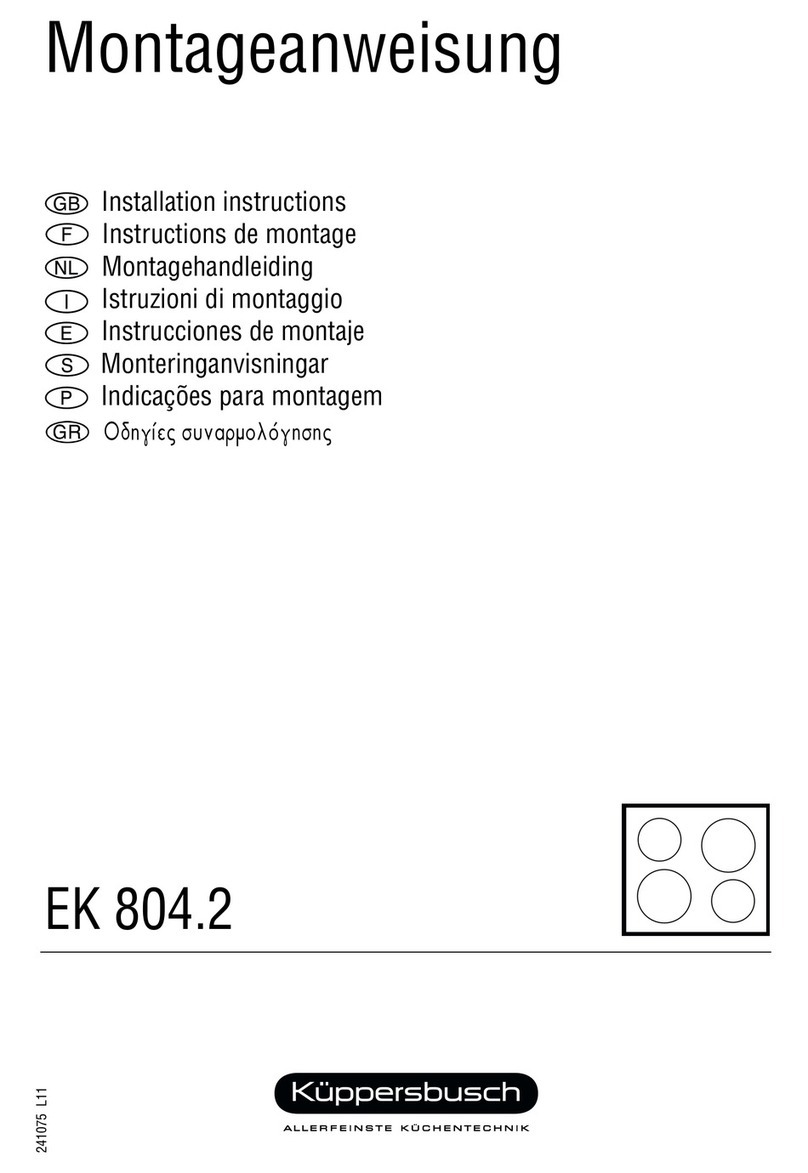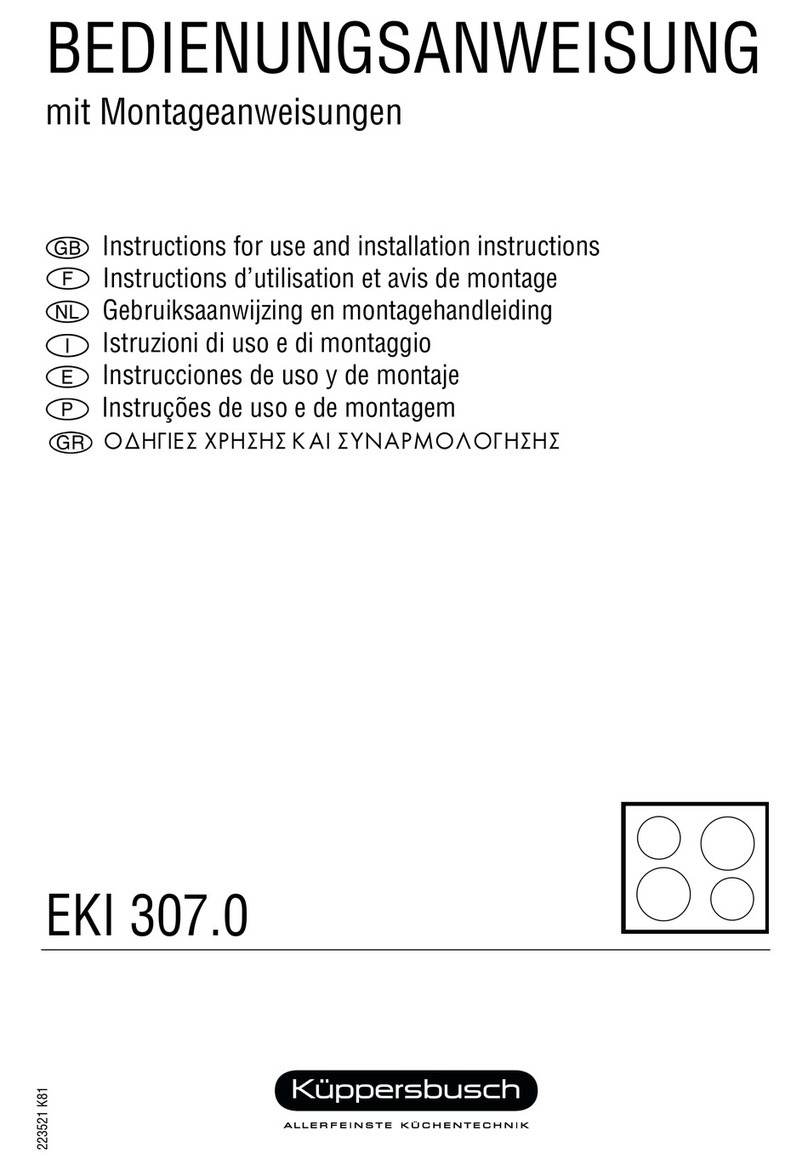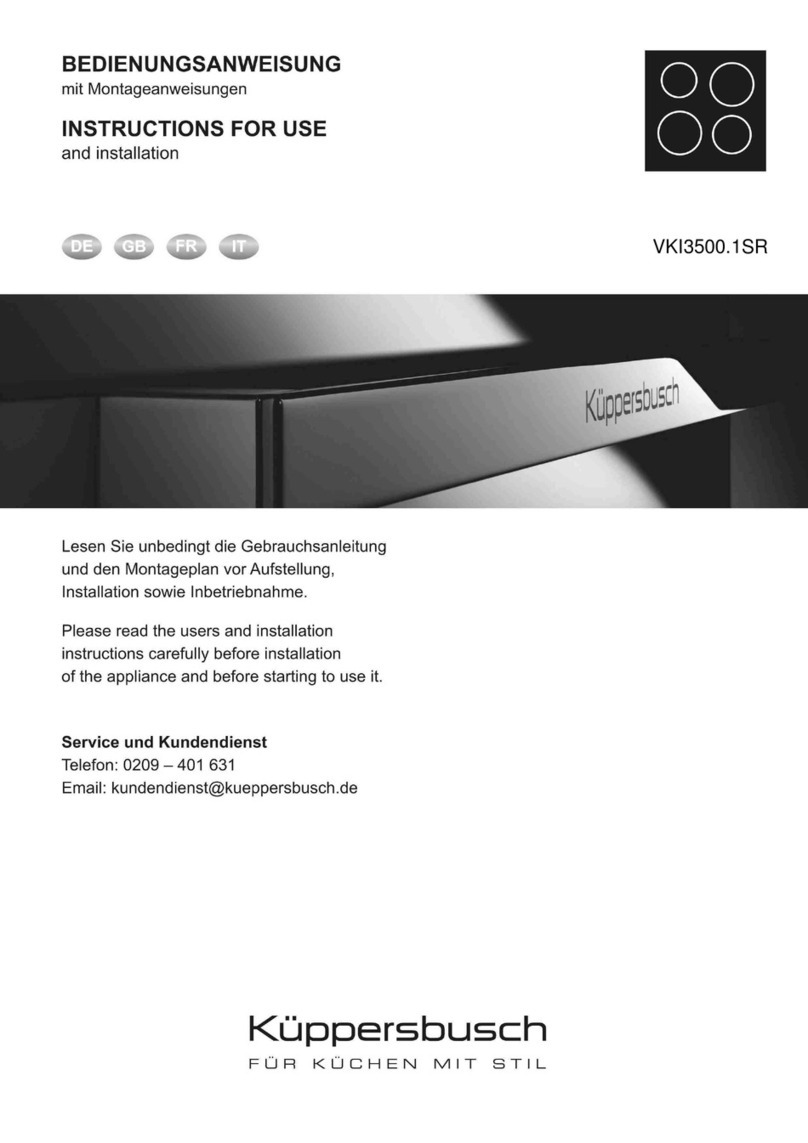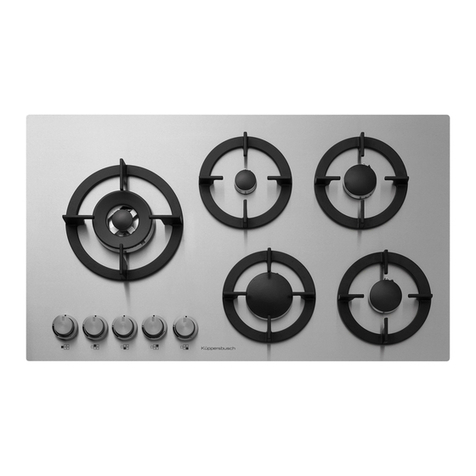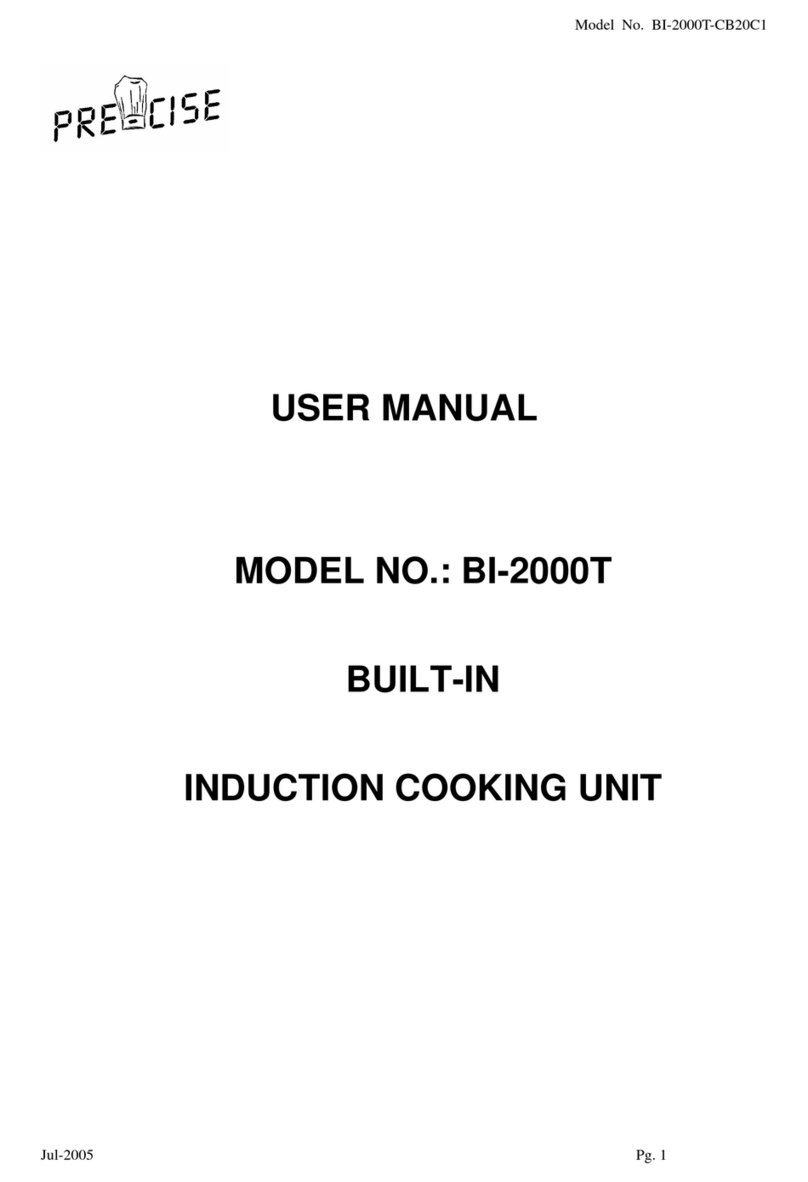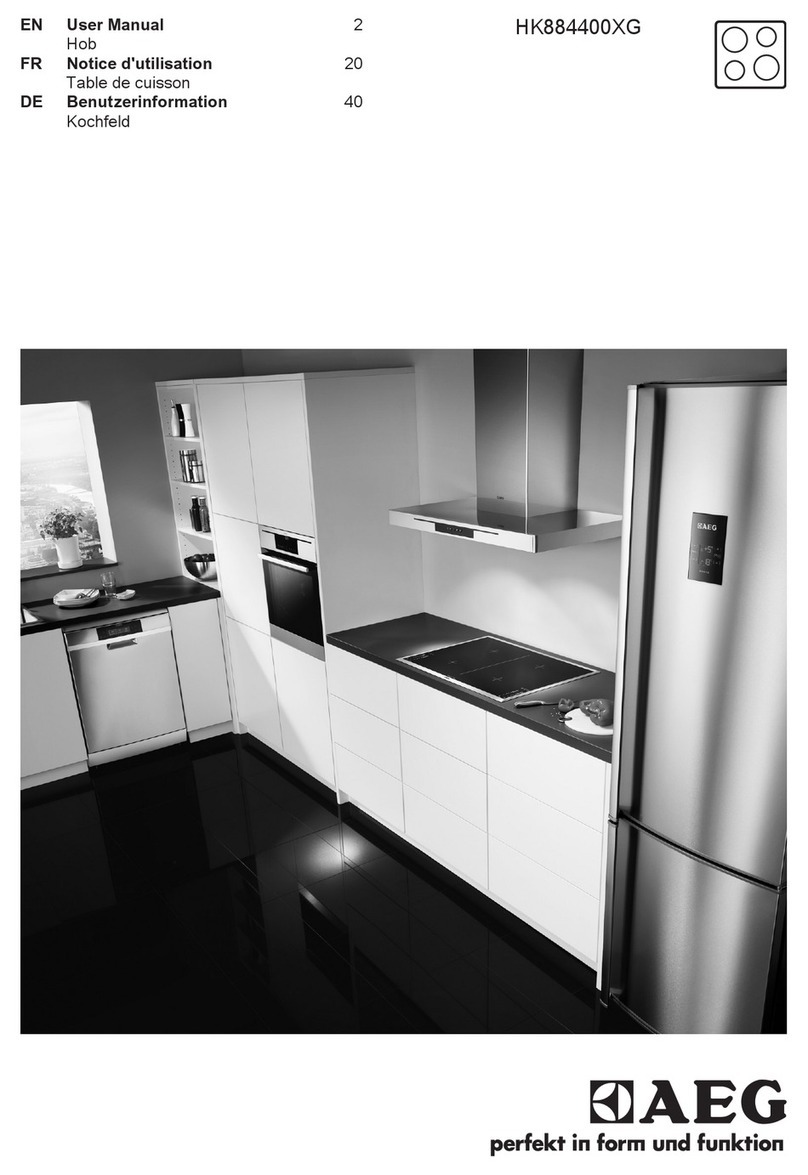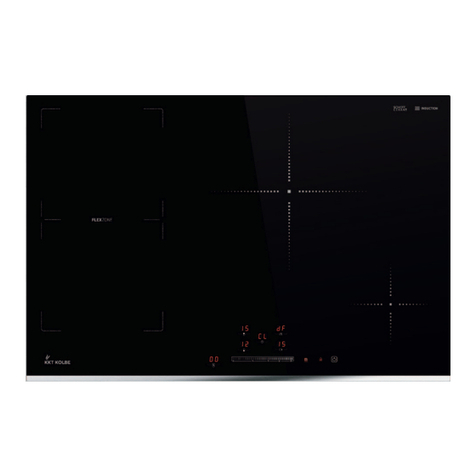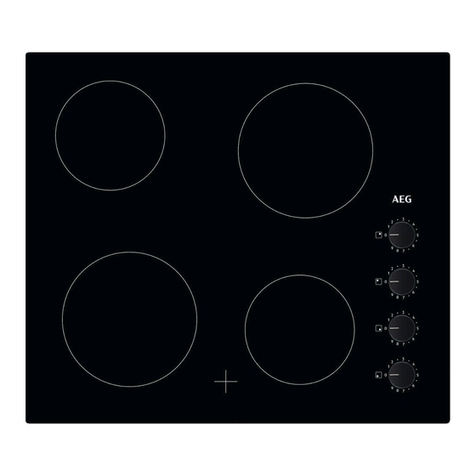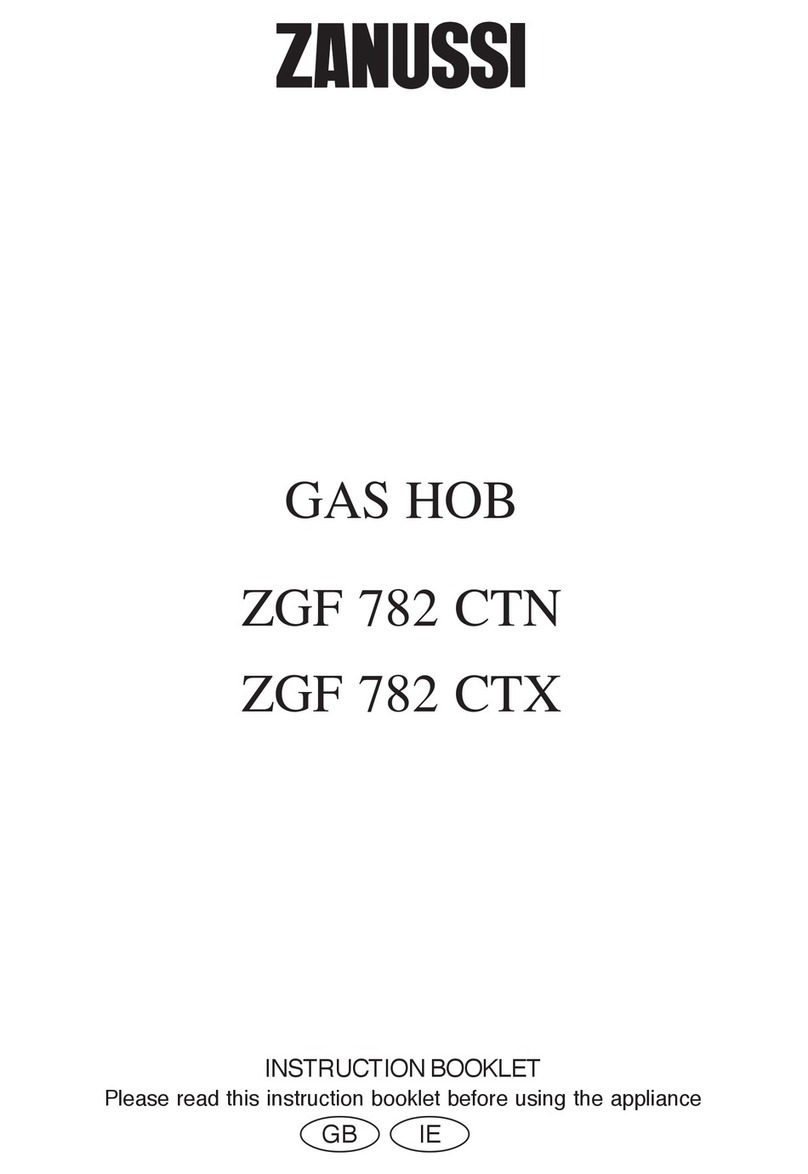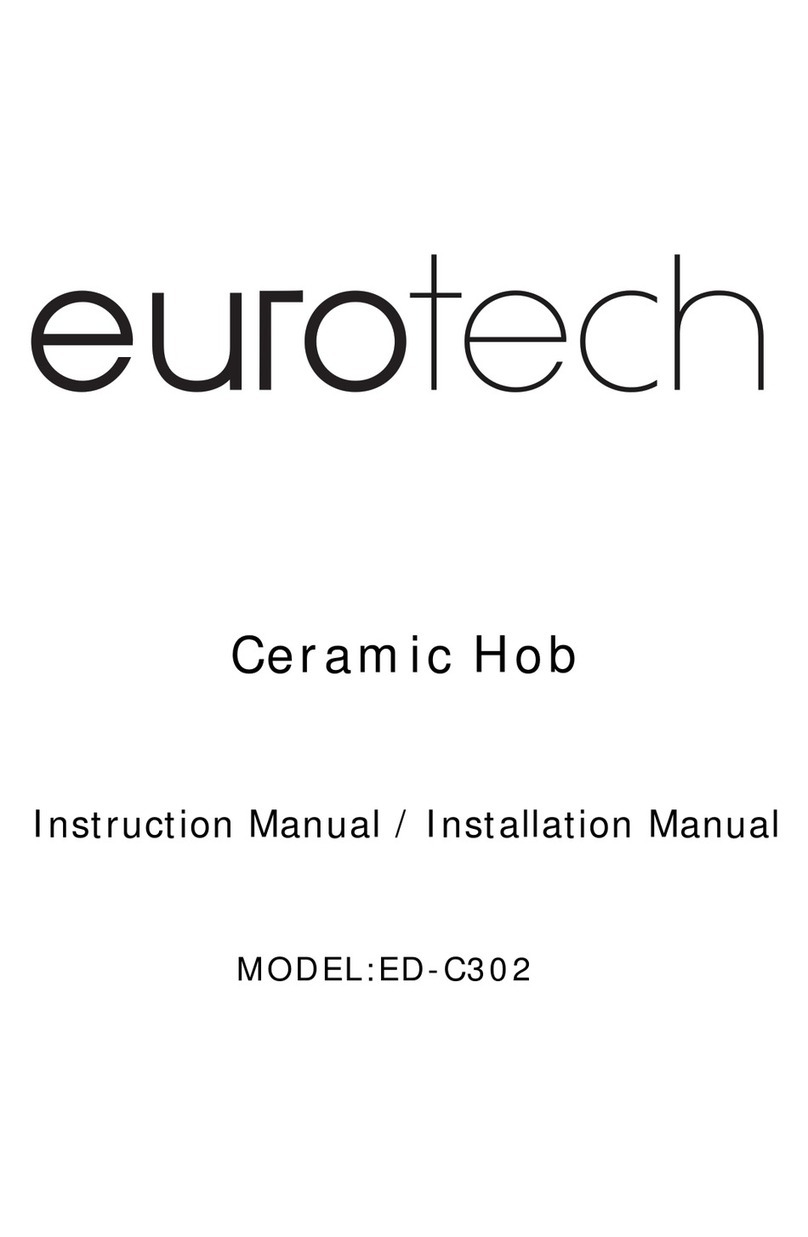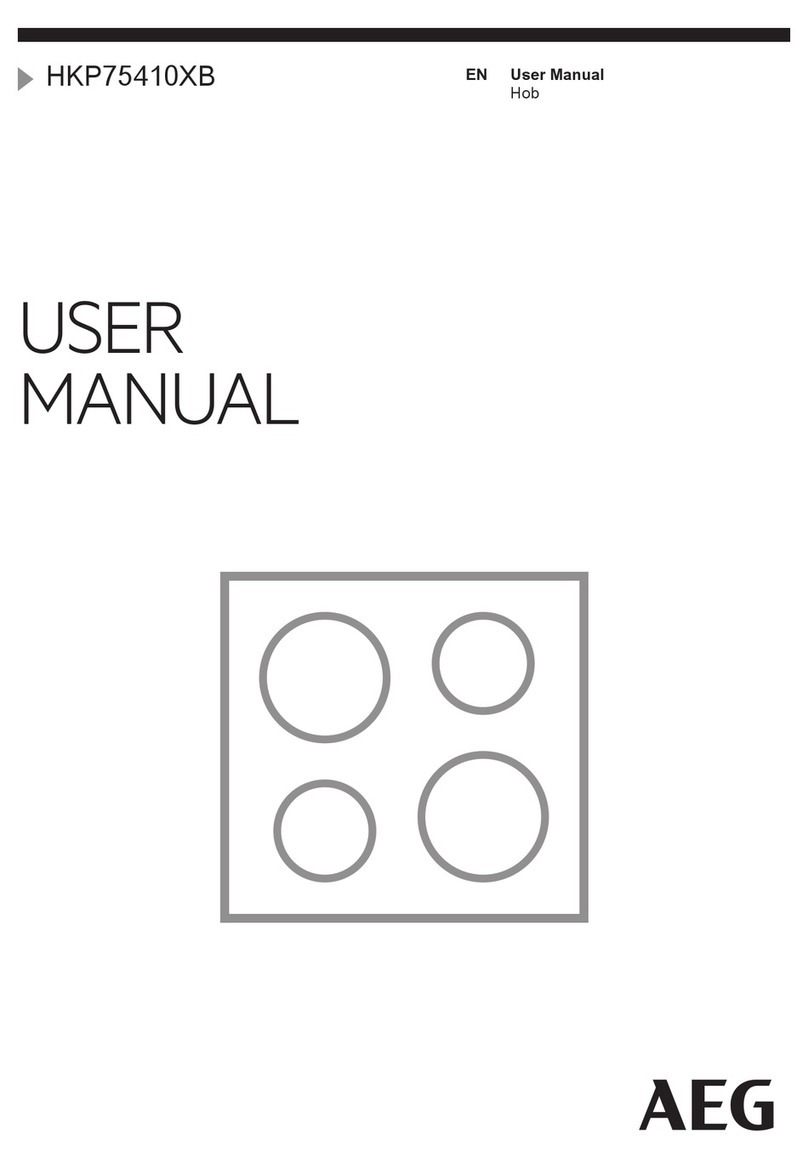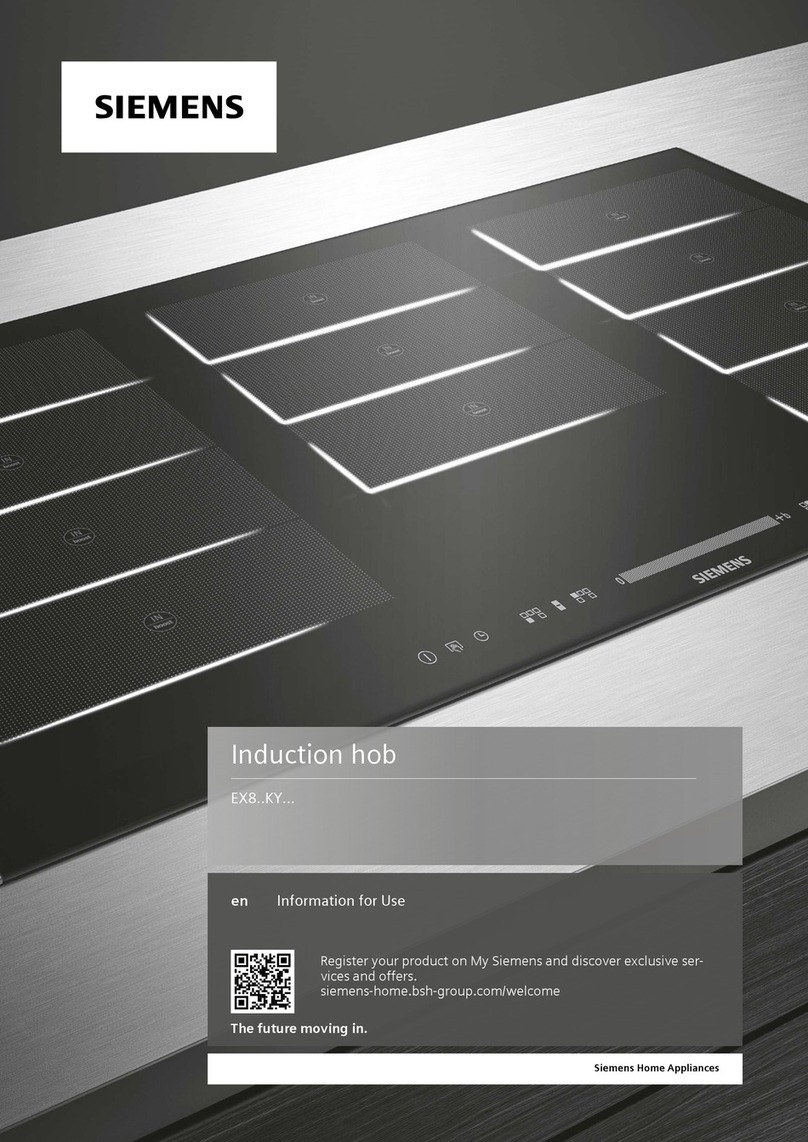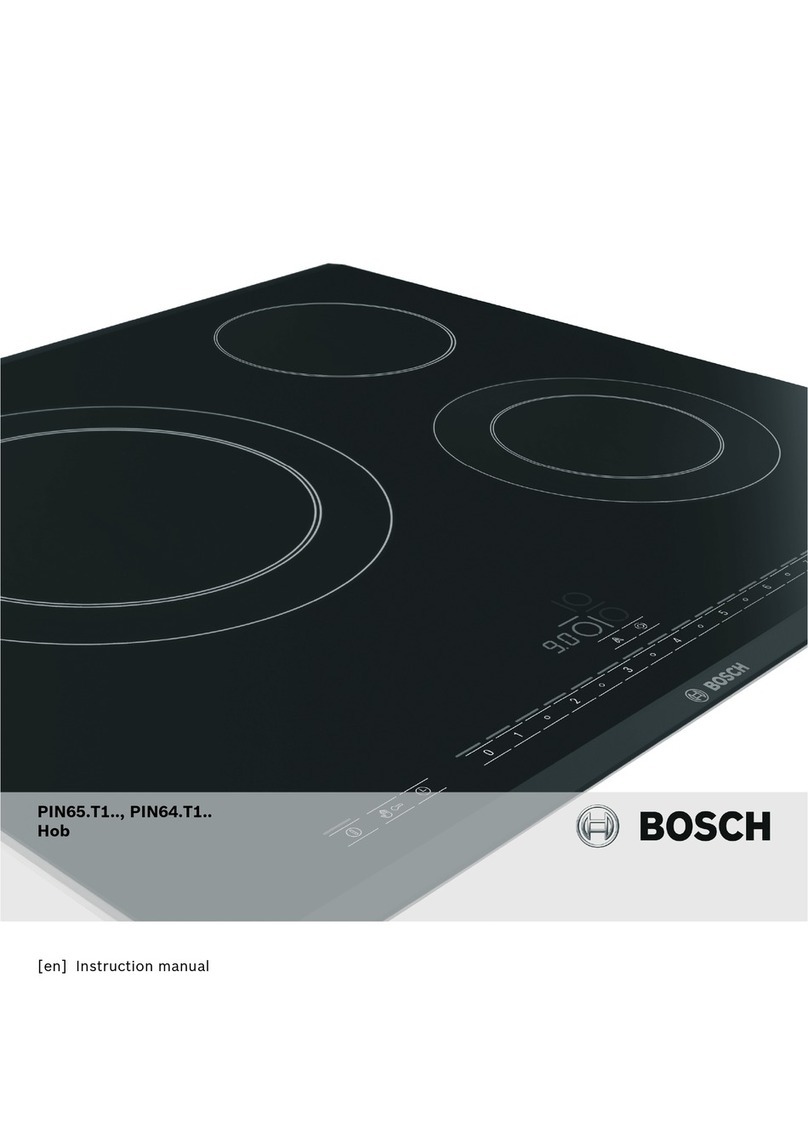1) TRADITIO AL BUR ERS
On the surface of the hob, there is a serigraphic
figure above each knob, indicating the burner to
which the knob refers. After turning on the gas at
the main or opening the valve on the gas bottle,
light the burners as indicated below:
- automatic electric ignition
Press the knob corresponding to the burner to use
and turn it clockwise to the “Maximum” position
(big flame fig. 1) pressing the knob right down.
- Lighting burners fitted with a safety cut-off
device
For burners fitted with a safety cut-off device, turn
the knob corresponding to the burner to use anti-
clockwise to the “Maximum” position (big flame
fig. 1) until it stops and then press the knob.
Continue pressing the knob for about 10 seconds
after the burner has been lit.
Should the flames accidentally go out, turn the
burner control knob off and wait at least 1 min befor
attempting to light it again.
How to use the burners
To obtain maximum performance with minimum gas
consumption, remember the following:
- use suitable pans for each burner (see the table
below and fig. 2).
- When boiling point is reached, turn the knob to the
“Minimum” position (small flame fig. 1).
- Always use pans with lids.
“DUAL” burner:
separate regulation of the inner and outer rings (in
practical terms, a dual burner controlled by a single
knob), offering very flexible use thanks to the
possibility to light either the inner flame only or the
whole burner (inner and outer flame at the same
time).
LIGHTI G A D USI G THE “DUAL” BUR ER
Stand the pan on the burner before lighting.
Despite being controlled by a single knob, the
“DUAL” burner can be used in two different ways.
A) - Using the complete burner:
starting from the off position ● You must first press
the knob, simultaneously turning it anti-clockwise,
until the indicator points to the maximum delivery
position obtaining the maximum flow capacity of
both flames.
When the flames are lit, keep the knob pressed for
a few seconds, until the device automatically keeps
the burner lit.
It is now possible to regulate the intensity of the
flame by turning the knob anti-clockwise (from the
maximum flow capacity position of the inner and
outer flames to the maximum flow capacity of the
inner flame and the minimum of the outer flame.
To turn off the burner, turn the knob clockwise,
realigning the indicator with the ● off symbol.
B) - Using the inner flame only:
after lighting the burner and regulating the inner
flame to maximum flow capacity and the outer
flame to minimum flow capacity as described
above, turn the knob anti-clockwise until it clicks
once. The inner flame is now at maximum flow
capacity while the outer flame is turned off.
Continue turning anti-clockwise to regulate the inner
flame to the minimum flow capacity.
Turning off:
to turn off the burner, turn the knob clockwise,
realigning the indicator with the ● off symbol.
Once the “DUAL” burner is operating in either of the
two modes described, it is possible to swap from
one mode to the other by simply pressing and
turning the knob to the position required:
USE
23


